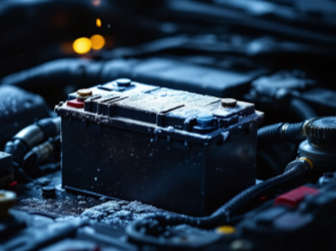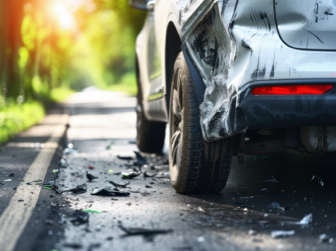Driving through fog will affect visibility, and it will also make it harder to gauge the distance between your vehicle and others. To stay safe and ensure road safety, it’s important to reduce speed and increase following distance, and to know when and how to use fog lights.
Sometimes when driving through fog you can only see a few metres ahead, or the fog suddenly becomes thicker, and you can barely see the road. This makes it difficult to judge the speed of other vehicles, or even if they’re moving at all.
If you know you’ll be driving through foggy conditions, the best solution is to wait until the fog clears. If this is not possible, prepare beforehand. Allow enough travelling time, so you can decrease speed when necessary. Breaking down in fog is especially dangerous because it’s harder for other motorists to see that your car is stationary, so check that you have enough petrol before starting your trip. Ensure your windows are clean and clear and wipe down your headlights.
Tip: Make sure your car is fit for any weather by staying up to date with all manufacturer-recommended services. A Service Plan through MotorHappy offers affordable monthly payments, which means all scheduled services are covered. Our Service Plans also come with free Roadside Assistance. Click here to find out more.
.jpg)
- Slow down and turn off cruise control.
- Be careful not to drive too slowly because other cars might crash into you. If visibility is bad, find a safe place to pull over.
- Maintain a safe following distance between you and your vehicle, to allow enough time to stop. Allow for at least a three second following distance.
- Use fog lights, and not your brights. Brights reflect light back and make it harder to see.
- Avoid distractions like music or phone calls.
- Be patient and avoid overtaking other cars. If you do have to overtake, indicate well beforehand.
- If you need to stop, find a safe spot off the road. Turn off your lights, put on your hazard lights, and wait until it’s safe to continue.
- Keep the windshield clear and use the defroster to demist windows.
- If you arrive at an intersection in thick fog, open your windows so you can listen for traffic.
- Remember to switch off your fog lights when visibility improves.
.jpg)
Most of the time, fog doesn’t settle on the road surface, but rather hovers just above it. Front fog lights point downward, aiming for this area just above the road, and they’re designed in such a way that the lights won’t reflect off the fog.
This is what your front fog light symbol might look like:

The front fog light symbol is usually a lamp pointing to the left, with lines pointing down and a wavy line (representing fog) moving through the lines. Front fog lights are usually white or yellow and they’re located underneath your headlights.
This is what your rear fog light symbol might look like:

The rear fog light symbol is usually a lamp pointing towards the right, with three vertical lines and a wavy line (representing fog). Rear fog lights are red, and they look like brake lights, making it easier for other drivers to see you.
Used car shopping? Includes Extended Warranty, and other tips
Top tips on how to entertain kids on long car rides


